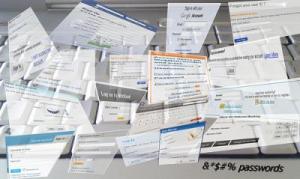We’re already over one week in 2016 and I realize I haven’t done much blogging lately.
One of the things that kept me busy is development on Outrun, and the joint Oracle / EMC Solution Center (OSC) on which I intend to write a bit more going forward.
Something I did about a year ago (without mentioning it too much) is upgrade my WordPress.com account to Professional. Not that I really need the extra add-ons, but I want my readers not to be disturbed by ads – OK, there’s ad blockers, but not everyone uses them, and on some platforms you simply can’t (iOS). Dirty Cash well spent (and no, I don’t get it reimbursed by my employer if you’d think that, my blog is mine, mine only and independent).
 Given that the number of page views on Dirty Cache passed a quarter million last year (thanks to all my readers), can you imagine the savings in bandwidth and productivity loss by not showing ads? ;-)
Given that the number of page views on Dirty Cache passed a quarter million last year (thanks to all my readers), can you imagine the savings in bandwidth and productivity loss by not showing ads? ;-)
So what else can you expect from me this year?
Of course, more about running Oracle on EMC and why I think that’s a pretty good idea. As the competition with Oracle is heating up, I intend to write more on comparing the differences between the solutions of both companies, debunking some marketing and competitive claims, and more. I also hope to find time to maintain the wiki on the Outrun site, and in addition to Outrun documentation, it might be a good place to put Oracle / EMC related howto’s, best practices, FAQs and more.
You also might be wondering what’s going to happen around Oracle / EMC solutions during the Dell / EMC aquisition… Me too. But we can’t (and are not allowed to) comment on it until the merger is final. Until then, business as usual. When the time is ready I’ll comment on new Dell / EMC / Oracle stuff where possible.
Continue reading →




 Given that the number of page views on Dirty Cache passed a quarter million last year (thanks to all my readers), can you imagine the savings in bandwidth and productivity loss by not showing ads? ;-)
Given that the number of page views on Dirty Cache passed a quarter million last year (thanks to all my readers), can you imagine the savings in bandwidth and productivity loss by not showing ads? ;-)
 With my blog audience all being experts in the IT industry (I presume), I think we are all too familiar with the problems of classic password security mechanisms.
With my blog audience all being experts in the IT industry (I presume), I think we are all too familiar with the problems of classic password security mechanisms. In previous posts I have focused on the technical side of running business applications (except my last post about the Joint Escalation Center). So let’s teleport to another level and have a look at business drivers.
In previous posts I have focused on the technical side of running business applications (except my last post about the Joint Escalation Center). So let’s teleport to another level and have a look at business drivers.